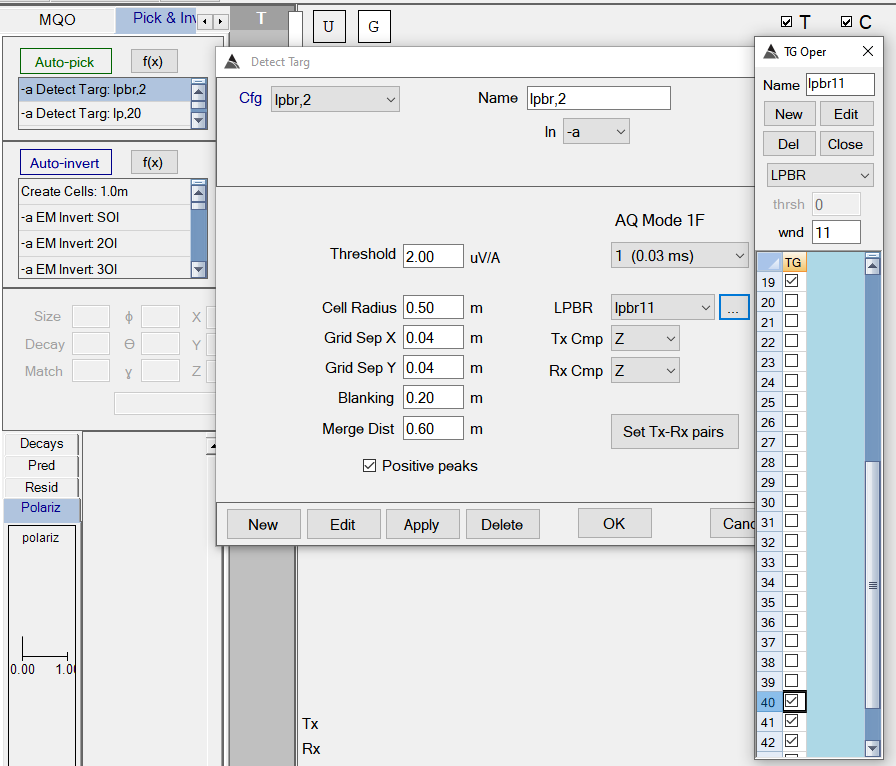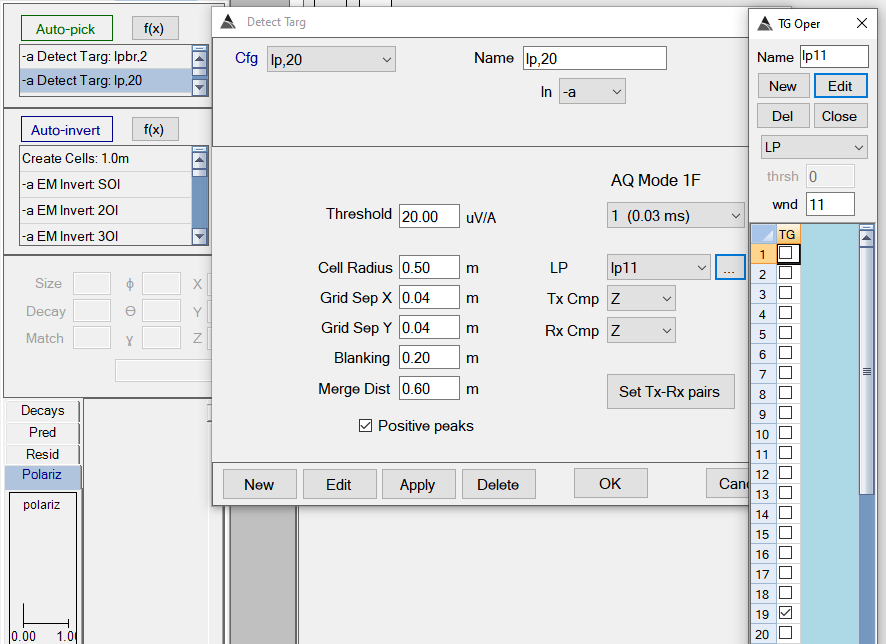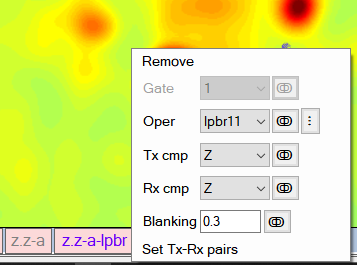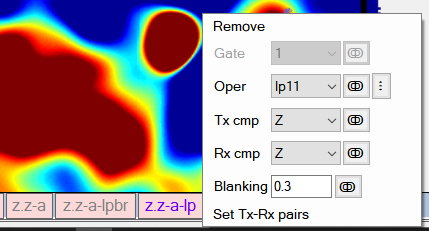Summary
This document describes how to perform advanced threshold target picking using the Blakely Peak Detector Algorithm (Blakely, 1986). A 2 staged approach developed by C. Murray (Parsons) will be described in detail. This is termed Low Pass Background Removal (LPBR) here.
Pre-requisites
Low Pass Background Removal (LPBR) target picking
Support for target picking using the low pass approach. Two detection functions can be created to run in the Auto-Pick flow. An example flow is shown below.
-
The detection function (named lpbr2 in this example, shown below on left) detects smaller targets, using the new LPBR type of time gate mask. On the right side you can see that an LPBR mask was created and named lpbr11. It has an 11 point smoothing window, and it also has gate 19 selected for the early low pass, with gates 40-45 selected for the late low pass. All these settings here will tell BTField how to create the required grid before running the peak detector at the specified threshold of 2.0 uV/A.

Configuration of the LPBR small target picker. -
The function in the flow (named lp20 shown below on left) detects larger targets, using the new LP type of time gate mask. On the right side you can see that an LP mask was created and named lp11. It has an 11 point smoothing window, and it has gate 19 selected for the low pass. All these settings here will tell BTField how to create the grid before running the peak detector at the specified threshold of 20.0 uV/A. Note also there is a new Merged Dist parameter that is used to merge any targets previously detected.

Configuration of the LPBR large target picker. -
To visualize the grid being used to detect the small targets, drag & drop the Detrended -a data state onto the Grid View indicator bar, then configure it with the lpbr11 time channel operation you have created (or whatever you named it):

Configuring the display to view the grid for the small target picker. -
To visualize the grid being used to detect the large targets, drag & drop the Detrended -a data state onto the Grid View indicator bar, then configure it with the lp11 time channel operation you have created:

Configuring the display to view the grid for the large target picker. -
After running the Auto-Detect flow, you’ll see quite a few targets being detected (actually many more detected with lpbr2 in the first step than with lp20 in the second step). Here you can see a previously missed QC seed being detected (highlighted target in the center). You may find it easier to tune thresholds by running the flow with only lpbr2, and then only lp20 to see how they perform individually.

Results of target picking for a previously missed QC seed.
References
Blakely, R. J., and Simpson, R.W., 1986, Locating edges of source bodies from magnetic or gravity anomalies: Geophysics, v. 51, p. 1494-1498.